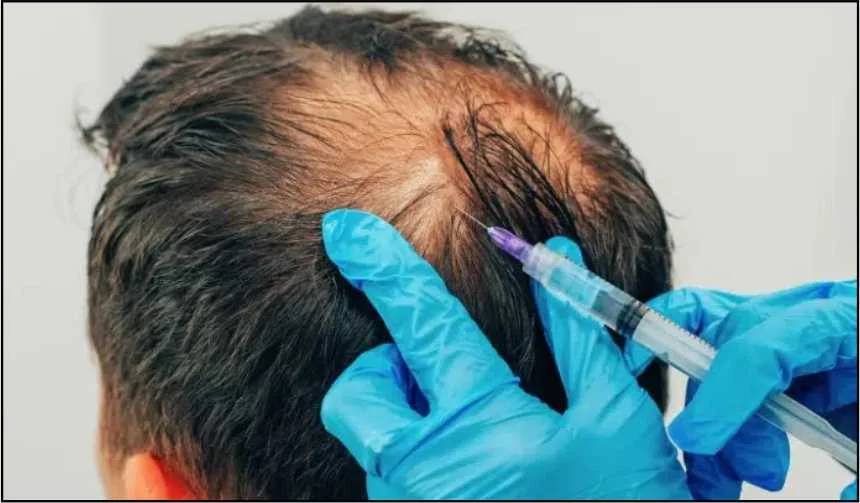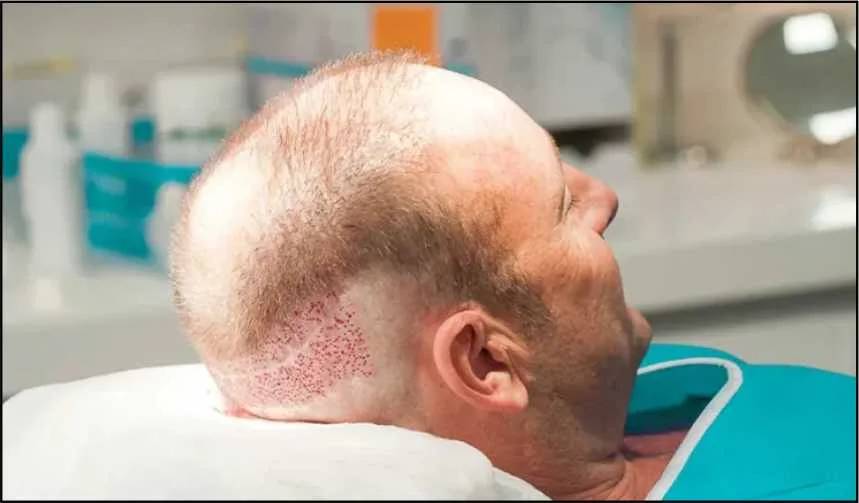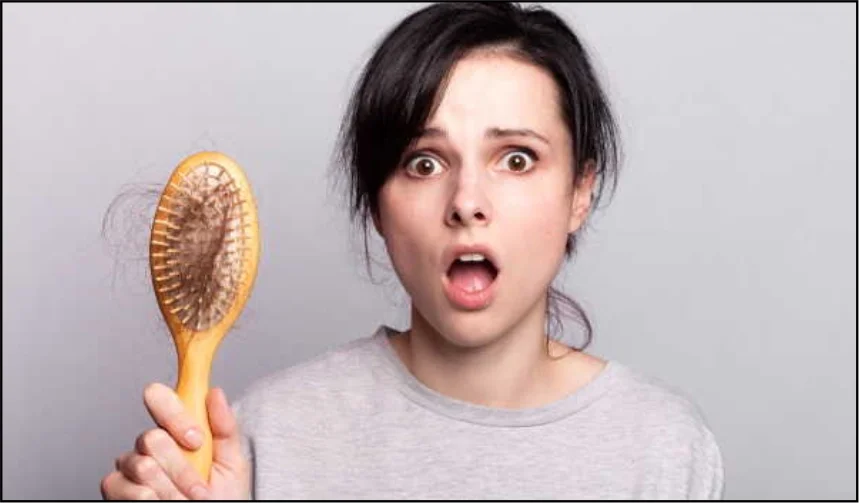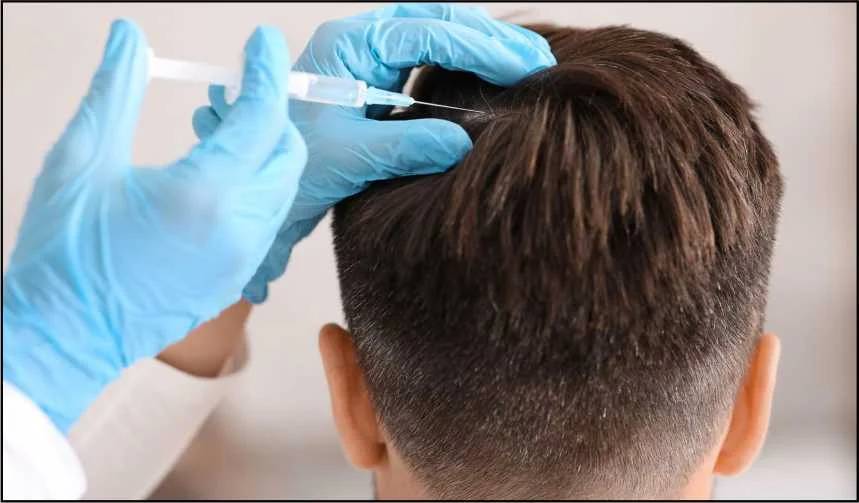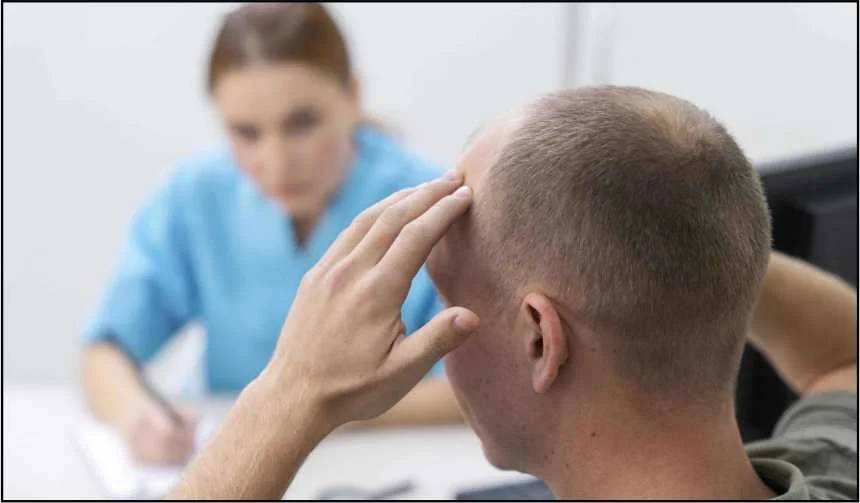A hair transplant is a boon for people struggling with permanent hair loss, as hair is a part of one’s identity, and losing it can be a devastating experience. Hair transplant surgery helps restore the hair, combining PRP with hair transplant is a proven hair loss treatment modality. Many patients with hair loss have found that PRP enhances the outcome of a hair transplant.Platelet-rich plasma therapy (PRP) is among the best and most effective ways to assist hair regrowth, recovery, and healing following a hair transplant. PRP treatment helps to promote hair growth and strength, effectively enhancing the overall success of hair transplant surgery. There are many reasons why PRP is used after a hair transplant, as it offers excellent support to hair follicles after the hair transplant. Applying PRP can offer a person a high success rate for hair transplantation.
What is PRP injection treatment?
PRP treatment is natural and safe and is done by using platelets suspended in plasma from the patient’s blood. These platelets are specialized cells that work by stimulating hair follicles via the release of growth factors. They also help create new blood vessels that stimulate tissue and signal the stem cells of hair follicles. PRP is said to be an effective treatment that promotes hair growth. PRP treatment takes about half an hour and is minimally invasive. You may need about two to four sessions in a gap of three to six months to improve hair density and thickness, as well as your hair and scalp health. It is outstanding in treating hair loss and effectively works by releasing growth factors and stimulating the hair follicles growth and development. Also, its anti-inflammatory effect helps promote tissue healing and soothes the signs of scalp problems.
Why is there a need for PRP treatment after a hair transplant?
An expert does PRP treatment, which is done by taking a small blood sample that is taken from the patient in the same way as a routine blood test. It is then placed in a centrifuge to separate the platelet-rich plasma from many other blood components. PRP treatment is said to be 85 to 90 percent effective in people struggling with hair loss and is best in outcomes following a hair transplant. You must consult an experienced hair transplant surgeon who will determine your needs and offer the best advice to attain effective results. Following the surgeon's advice and staying patient is mandatory to attain the desired results. PRP improves hair transplant results; thus, it is best to get it after the grafts have healed. PRP contains a holding solution for hair grafts and helps increase follicle density and the percentage of graft uptake by reducing the amount of hair falling following a hair transplant. Also, if you take PRP treatment during the course of hair restoration surgery, it will increase follicle growth and also reduce the time it takes to see the results.
Benefits of PRP after hair transplant
Getting PRP Injections After a Hair Transplanteffectively enhances the outcomes and can also benefit your scalp and follicles. Some benefits are :
- Stimulates the natural healing process : PRP contains useful growth factors that help in reducing the healing phase after a hair transplant. It also helps tissue grow and can attract activated cells involved in tissue repair, speeding up the recovery.
- PRP increases the graft survival rate : After a hair transplant, PRP helps in the development of new blood vessels in the hair scalp, helping them to develop, grow, and thrive. It also helps in collagen formation, which is required to support the healing tissue.
- PRP reduces the dormant phase following hair transplant : However, after a hair transplant, you enter a dormant phase, i.e., resting phase, which lasts for some months, but is normal, and PRP reduces this dormant phase. PRP stimulates hair follicles that return to the growth phase faster and helps achieve regrowth.
- PRP increases hair density, thickness, and length : PRP promotes hair follicle development and increases the nutrients they get, supporting them to grow larger, and also helps to produce thicker and longer strands.
When is the right time to undergo a PRP procedure?
PRP is considered best because of its effectiveness following the hair transplant procedure; however, to make it effective, you have to get it done approximately ten days after post-procedure of transplant, and after that, you have to get it as per scheduled that will be fixed by the surgeon after 1-2-3 months and also at 6th months. Four sessions are generally sufficient, and PRP ensures a high success rate for the hair transplant results. The sessions will be completed after three to four months post-hair transplant. PRP is known for its effectiveness and is an outstandingly advanced treatment. It is beneficial to existing hair as well and offers a positive impact.
Addressing misconceptions
It is vital to clear a few misconceptions regarding PRP and hair transplants. People must know and understand that :
- PRP is not at all an option or substitute for a hair transplant procedure, as it stimulates growth in thinning areas only. It cannot restore the hairline or cover bald patches.
- PRP uses a person’s blood and thus involves minimal allergic reaction or side effects risks. It is a safe procedure when performed by an expert hair transplant surgeon.
- Also, remember that PRP should be considered, especially when you have weak follicles and poor blood circulation, and wish to achieve the best hair transplant outcomes.
Conclusion
If you seek the best hair transplant, it is a great step to transform your overall appearance and also to enhance your confidence. To unlock its full benefits, you must also undergo PRP after hair transplant surgery, as it is essential. It is considered a powerful combination that ensures faster recovery and delivers healthier, thicker, and more sustainable results. At Skinroots, one of the best skin and hair clinics in Delhi and Raipur, consult a board-certified surgeon who offers tailored PRP treatment plans to perfectly complement your hair transplant and help you attain desired outcomes. Visit Skinroots today to understand and know all about how PRP can help in enhancing hair transplant surgery results. Hair restoration is a journey, and undergoing PRP with a hair transplant can make a big difference, so go for it and clear your doubts in your consultation with the expert at Skinroots.

